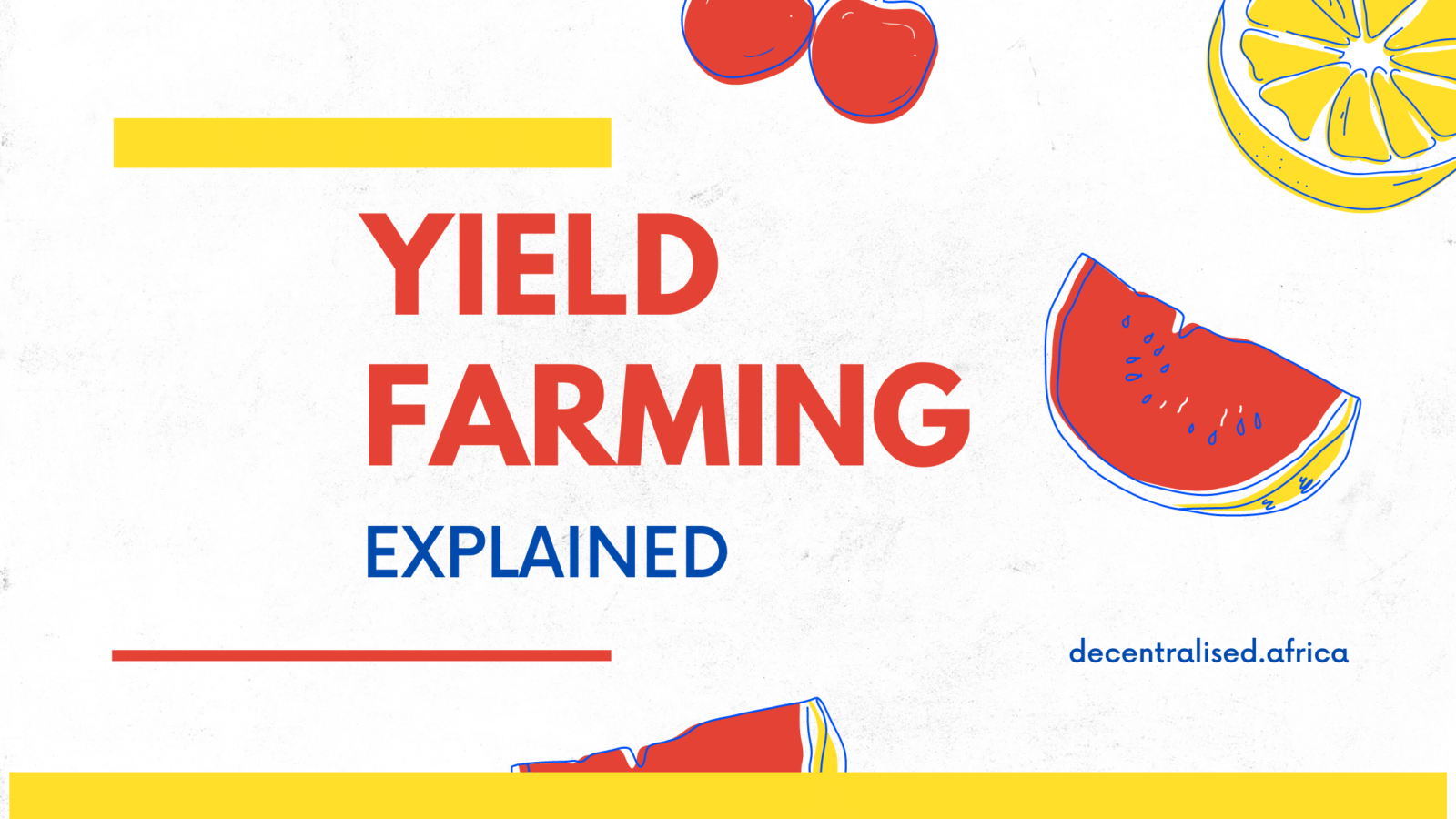
What is Yield Farming?
Back in 2017… Cryptocurrency exploded into the mainstream. Everyone was talking about blockchains, Bitcoin, and ICOs. Now, in
Back in 2017…
Cryptocurrency exploded into the mainstream. Everyone was talking about blockchains, Bitcoin, and ICOs. Now, in 2020, the buzzwords have changed, the landscape has evolved, and digital assets have got smarter and more interesting. People are talking about DeFi, liquidity pools, and, as you will learn about here, yield farming.
In this article, we will discuss what yield farming is, why Ethereum is pivotal, who some of the big players in yield farming are, and what the most common methods and risks are.
So, what is yield farming?
To put it in simple terms, yield farming is the practice of ‘farming’ for the best yields by investing crypto into DeFi markets. Users can lend their Ethereum and other ERC20 tokens on certain platforms such as Aave or Compound, in exchange for either a fixed or variable interest rate. Or, they can move their crypto around different platforms looking to take advantage of different DeFi services that can also bring a yield. Supplying liquidity to a liquidity pool is also part of yield farming.
To summarise, yield farming is just simplify trying to generate big yields out of crypto, but rather than spot trading, crypto investors find other DeFi methods.

Let’s compare yield farming crypto with traditional finance
Imagine you want to put your savings in a bank account with a high APY/APR, so you start shopping around the market, but because it’s 2020 and times are not so good, accounts are offering just 0.1% or 0.2%. You think it’s not worth your time, so you start looking at other ways to profit from your savings, and you come across microlending, as well as some other small investment opportunities. The risks are higher, but so are the returns too.
Some yield farming methods have been able to help investors double their pot in one year, more than any bank’s savings account can offer.
Who are some of the big names in yield farming?
We’ve mentioned two names so far, which are Aave and Compound. Both projects are relatively new, having launched their protocols in 2020, and have been met with great success and a boom for the DeFi market. In fact, some DeFi tokens have grown in value by over 1000%.
- Compound is an ‘algorithmic, autonomous interest rate protocol built for developers’, which allows crypto investors to earn interest on their crypto assets. Users also earn the COMP governance tokens for using the protocol
- Aave is a ‘decentralized non-custodial money market protocol’ where users choose to be depositors (to provide liquidity and earn a passive income) or borrowers (with options for both overcollateralized and undercollateralized loans)
Some other yield farming tools include:
As yield farmers learn how to maximise profitability from these exciting protocols, we can expect to see more technologies and strategies popping up in the space.
What are some yield farming strategies?
Here are two of the most common strategies employed by yield farmers:
- Liquidity Mining – This is simply the process of rewarding tokens to the users of a protocol. Makers, who provide liquidity, are rewarded financially for providing that liquidity and then they get a nice bonus on top in the form of the rewards. If the token rewards gain value quickly, some farmers may consider risking their initial capital in order to get more distributed tokens. This was the case with Compound, where borrowers were rewarded with COMP tokens that became so valuable that it became more profitable to borrow on the protocol than to lend! This was one of the first major events in the yield farming space and has helped move the technology and strategy forward
- Leverage – This is where yield farmers use borrowed crypto assets to increase the potential return of an investment. For example, you would deposit your coins as collateral and use them to borrow other coins. You then use the borrowed coins as further collateral to borrow even more coins. Rinse and repeat, leveraging the initial capital and generating large returns, or, risk making large losses if the collateral becomes liquidated
Is yield farming risky or dangerous?
As mentioned above, liquidation is a big risk, but it’s not the only risk. It has to be said that the technology is still developing and evolving, so bugs within smart contracts, issues with platforms rising and falling, admin key and systemic issues, or Ethereum taking a big hit could all create risks for yield farmers. There are malicious risks too, such as hackers trying to drain liquidity pools because they know just how lucrative it can be.
Conclusion
DeFi and yield farming are proving to be a massive boost to the cryptosphere and could pave the way for another bull market. With all of that promise comes some risk, so be sure to use quality resources, be cautious, and make reasoned decisions.







